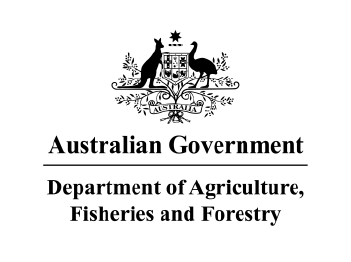Centre of Excellence for Biosecurity Risk Analysis
We provide strategic thinking and practical solutions across the biosecurity continuum. We deliver practical, rigorous solutions and strategic advice for biosecurity risk assessment, management, and communication.


We play a vital role in assisting the Australian and New Zealand Governments to remain at the forefront of practical biosecurity risk analysis by providing collaborative, relevant and practical research outcomes. CEBRA CEO Andrew Robinson
Latest
Contact CEBRA
cebra-info@unimelb.edu.au
+61 3 8344 4405
CEBRA is a long-standing biosecurity research initiative of the Commonwealth
Sponsors


Current projects
-
Biosecurity risk from changes in climate, trade and pest and disease pathways
CEBRA is developing a model to predict how biosecurity threats will impact international trade under climate change. Predictions of this advanced model will help agencies better anticipate biosecurity risks and design interventions to mitigate them.
- climate change
- trade
- GTAP model
- damage function
- environmental economics
-
Incentive-compatible biosecurity policies — a framework for regulatory design
CEBRA’s economics expertise is key to creating a framework for developing incentive-compatible biosecurity regulation.
- Incentives
- biosecurity regulation
- behavioural economics
-
Value added — modelling the marginal return on investment within and across pathways
Building on the groundbreaking Value model that calculates the return on investment for Australia’s biosecurity system as a whole, CEBRA is developing a new model to measure the value of different levels of intervention.
- Value model
- return on investment
- resource allocation
- biosecurity policy
-
Automated image analysis for identifying the biofouling risk of vessels
CEBRA is developing a new image analysis tool to automatically identify biofouling of ship hulls from underwater photos which will make marine biosecurity inspections more accurate and efficient.
- Biofouling
- image analysis
- automation
- machine learning
- marine biosecurity
-
A Biosecurity Risk Research Portal to Inform Decision-Making
CEBRA is developing a research portal — a digital library — that will answer key questions about the real-world biosecurity system, which will be used to access relevant biosecurity research.
- Technology
- analytics
- biosecurity research
- knowledge management
-
Improving DAFF’s effectiveness in engaging the community about general surveillance
CEBRA is developing an economic analysis tool for estimating costs and benefits of general surveillance programs to enable biosecurity agencies to undertake cost-effective community engagement.
- community engagement
- community surveillance
- citizen science
- economic analysis
- ABARES
- biosecurity policy
-
Short-term population forecasting of the Australian Plague Locust
CEBRA is developing a model for the Australian Plague Locust Commission to forecast outbreak conditions for Chortoicetes terminifera
- Australian Plague Locust Commission
- APLC
- Australian plague locust
- Chortoicetes terminifera
- DYMEX
- biosecurity
- biosecurity risk
- invasive species
- agriculture
- machine learning
-
Return on investment in international standard setting engagement: A case study on BSE status
Australia’s involvement in WOAH’s recent revision of international bovine spongiform encephalopathy (BSE) standards helped in maintaining a ‘negligible’ risk status. This study investigates the value of engaging in international standard setting.
- International standard setting
- World Organisation for Animal Health
- WOAH
- trade
- biosecurity
- biosecurity risk
- BSE
- mad cow disease
- animal diseases
- agriculture
- international standards
-
Developing a comprehensive approach to consequence estimation (‘Consequence Estimates’)
CEBRA is supporting the Department of Agriculture, Fisheries and Forestry in assessing environment impacts of pests to improve our ability to measure the value of the of Australia’s biosecurity system.
- consequence estimates
- value model
- biosecurity
- biosecurity system
- non-market valuation
- impact assessment
- pests
- diseases
-
Quantitative model for assurance-based auditing of approved arrangements
CEBRA’s high-level statistical expertise is being used to guide approved arrangement regimes to better understand how frequently audits should be conducted to promote compliance among industry participants.
- approved arrangements
- DAFF
- biosecurity
- biosecurity risk
- audit
- statistics
- imports
- shipping
- invasive species
- agriculture
- environment
- health
-
Assessing the potential role of feral pigs in an outbreak of foot-and-mouth disease in Australia
The Australian Animal Disease Spread Model (AADIS) is being used to predict transmission of foot-and-mouth disease via feral pigs if an outbreak occurs on Australian soil.
- AADIS
- foot-and-mouth disease
- FMD
- feral pigs
- livestock
- epidemiology
- biosecurity
- biosecurity system
- animal health
- animal diseases
- decision support tool
-
Valuing New Zealand’s biosecurity system
CEBRA is building a value model for MPI to measure the economic value of New Zealand’s biosecurity system. Applying and adapting CEBRA’s established modelling approach to the New Zealand context will provide a comprehensive understanding of the benefits of the national biosecurity system.
- Value model
- New Zealand
- MPI
- return on investment
- damages
- biosecurity system
- biosecurity policy
-
CEBRA non-core projects
The biosecurity system
What is the biosecurity continuum? The body of management activities implemented by a country to protect its economy, environment, and human health from the damaging impacts of pests and diseases.